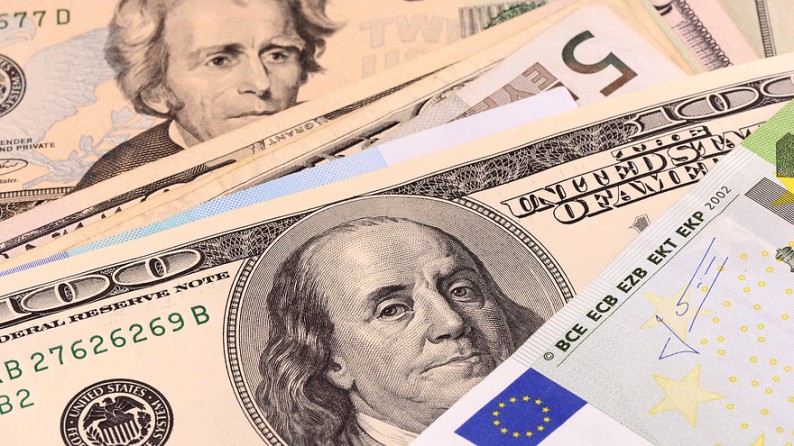The dollar recovered slightly Thursday after nearing a three-month low against the euro earlier in the session, but remained broadly weaker on the day.
After declining against the euro for most of the Asia and European trading sessions, the dollar slow inched higher after a mixed batch of data that included weaker than expected producer prices, and a strong reading on weekly jobless claims.
Producer prices declined for the seventh time in the last nine months, falling a seasonally adjusted 0.4%. Economists polled by MarketWatch had expected no change.
Initial jobless claims in the period stretching from May 3 to May 9 decreased by 1,000 to 264,000, the Labor Department reported, holding near a 15-year low.
The weakness in the producer prices report, which is one of several widely watched gauges of inflation, didn’t weigh on the dollar because its outcome was widely expected.
“It was expected to be poor in general. A weak number amid low expectations doesn’t really move the needle,” said Mike O’Rourke, chief market strategist at Jones Trading.
The shared currency rose as high as $1.1435 earlier in the session, putting it just short of a three-month high around $1.1450, but began weakening after Greek Finance Minister Yanis Varoufakis said his country’s repayments to the European Central Bank should be pushed back to “the distant future.”
The euro EURUSD, +0.2290% rose to $1.1376 from $1.1354 late Wednesday in New York. Richard Perry, market analyst at Hantec Markets, said that signs of an economic slowdown in the U.S. were primarily responsible for the euro’s strength, rather than European factors.
Meanwhile, the ICE U.S. dollar index DXY, -0.03% remained near its lowest level since January. It was down 0.1% to 93.55, putting it on track for a 1.4% weekly decline.
The dollar suffered its worst day in a week on Wednesday after the April retail-sales report showed that consumer spending remained weak in April. Economists had expected sales to rebound after three months of disappointing reports.
Second-quarter data have been more sluggish than many, including Federal Reserve policy makers, had expected. Many expected growth to rebound, but so far the market has seen little evidence. Weak trade data released last week suggest the flat reading on gross domestic product from the first quarter will be revised lower.
The ruble USDRUB, +1.5550% fell sharply after the Bank of Russia said it would start buying up to $200 million each day to replenish its foreign-currency reserves. The dollar bought 50.026 rubles, up from 49.255 on Wednesday.
Read more: Dollar reverses after nearing 3-month low against euro











Leave A Comment